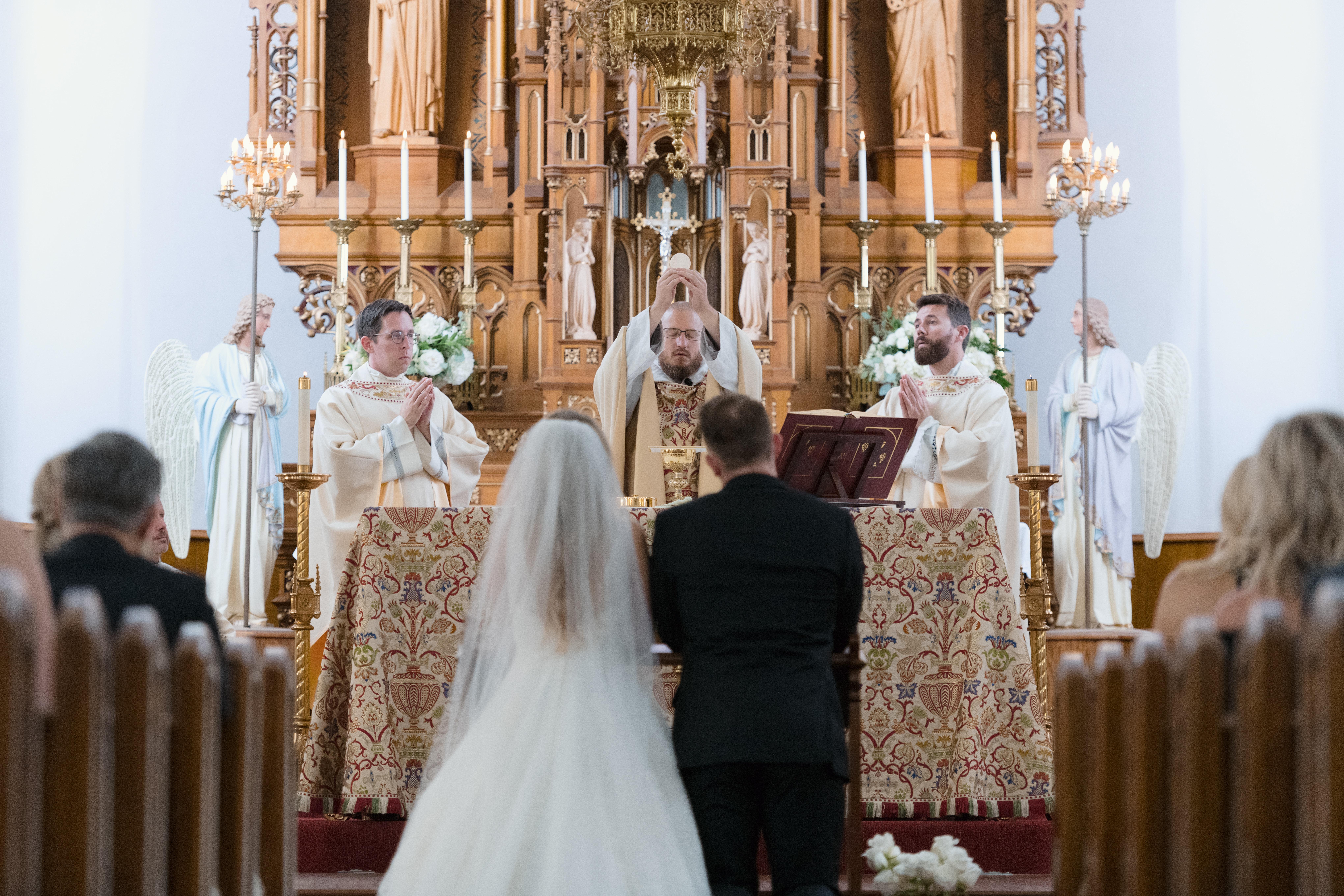Welcome to a spiritual journey unlike any other. In this enlightening article, we will delve deep into the mystical realm of Eucharistic adoration, unravelling the sacred facts that lie at its core. Brace yourself for a captivating exploration into the history, significance, and profound truths surrounding this revered practice. Prepare to be enlightened as we embark on a spiritual odyssey, unveiling the hidden gems and timeless wisdom that Eucharistic adoration holds. Join us as we peel back the layers and immerse ourselves in a world of divine devotion and spiritual revelation.

Eucharistic Adoration Facts
Eucharistic adoration, a devotional practice rooted in Western Catholicism, encompasses the adoration of the Blessed Sacrament, the Eucharist. This deeply spiritual practice is also observed to a lesser extent in Anglicanism, Methodism, and some Lutheran traditions. At the core of Eucharistic adoration lies the belief that the Eucharist is truly the body and blood of Jesus Christ. It is a practice that fosters a profound sense of love, gratitude, and reverence towards Christ’s presence in the Eucharist (eucharistic adoration facts).
The foundation of Eucharistic adoration is the highest form of worship in Catholic theology, known as latria. This practice can be carried out both individually and in groups, featuring various accompanying elements such as prayers, hymns, or readings. Eucharistic adoration can take place when the Eucharist is exposed or when it is reserved in a tabernacle. These different forms create opportunities for participants to seek grace, healing, peace, and spiritual growth while deepening their relationship with Christ and his Church (eucharistic adoration facts).
Eucharistic Adoration: A Timeless Practice
Eucharistic adoration, although dating back to the early centuries of the Catholic Church, gained more widespread and formalized recognition in the Middle Ages. Since then, it has continued to be a deeply significant practice for Catholics around the globe. While primarily embraced by Western Catholicism, some Eastern Catholic parishes and communities have also incorporated Eucharistic adoration into their spiritual lives. This practice serves as a powerful form of evangelization by witnessing to the faith and inviting others to encounter Christ in the Eucharist (eucharistic adoration facts).
Throughout centuries of observation and devotion, various aspects of Eucharistic adoration have been revered and celebrated. Let’s explore some key facts that unveil the profound beauty and significance of this practice.
Fact 1: Encounter the Divine Presence
Eucharistic adoration provides a unique space to encounter the divine presence of Jesus Christ. Through this devotion, individuals have the extraordinary opportunity to be in the presence of the true body and blood of Christ. It is a sacred encounter that invites believers to open their hearts and minds, fostering an intimate connection with their Lord and Savior. In a world full of distractions, Eucharistic adoration offers a quiet refuge for personal reflection, contemplation, and spiritual growth. As We celebrate the Eucharist, we experience a profound encounter with the divine presence of Jesus Christ (eucharistic adoration facts).
Fact 2: A Gateway to Spiritual Nourishment
Eucharistic adoration is a gateway to spiritual nourishment. In the midst of our hectic lives, it offers a respite where we can find solace, seek guidance, and be rejuvenated. Just as food nourishes our bodies, the Blessed Sacrament nourishes our souls, providing the grace necessary to navigate life’s challenges. By partaking in this devotional practice, we tap into a wellspring of spiritual strength and fortitude that empowers us to live out our faith with renewed vigor. Eucharistic adoration is a balm for the weary soul, providing the sustenance needed to thrive in our spiritual journey (eucharistic adoration facts).
Fact 3: Unity in Communal Adoration
While Eucharistic adoration can be a deeply personal experience, it is also a practice that brings people together in communal worship. Gathering with fellow believers in adoration of the Blessed Sacrament creates a sense of unity and shared devotion. Through communal adoration, individuals can draw inspiration from one another’s faith and find strength in the collective spirit of reverence and love for Christ. It is a powerful opportunity to connect with the larger Church community, fostering a sense of belonging and solidarity (eucharistic adoration facts).
Fact 4: Seeking Grace and Spiritual Growth
Eucharistic adoration provides a space for believers to seek grace and experience spiritual growth. By devoting time to be in the presence of the Blessed Sacrament, individuals open themselves to the transformative power of Christ’s love and mercy. It is a moment to bring our intentions, hopes, and struggles to the altar, confident in the knowledge that Christ is present and attentive to our needs. In this intimate encounter with Christ, we find solace, peace, and the strength to overcome obstacles on our journey of faith. Eucharistic adoration is a wellspring of grace, offering abundant opportunities for spiritual renewal and growth (eucharistic adoration facts).
Fact 5: A Tradition Rooted in History
Finally, Eucharistic adoration is a tradition deeply rooted in history. Since its early beginnings in the Catholic Church, this practice has evolved and adapted to different cultural contexts while remaining a vital aspect of the faith. Throughout centuries, the devotion of Eucharistic adoration has been passed down, carrying with it the wisdom, reverence, and love of countless generations. It forms part of the rich tapestry of Catholic tradition and serves as a testament to the enduring power of the Eucharist in the lives of believers. Eucharistic adoration connects us to the history of the Church and allows us to participate in a practice with profound spiritual significance (eucharistic adoration facts).
In conclusion, Eucharistic adoration is a deeply spiritual practice that exposes believers to the divine presence of Jesus Christ. This devotional practice, rooted in Western Catholicism, enables individuals to encounter Christ in the Blessed Sacrament and receive spiritual nourishment. Whether practiced individually or in a communal setting, Eucharistic adoration provides believers with opportunities for grace, healing, unity, and spiritual growth. It is a tradition steeped in history, connecting the faithful to the Church’s rich heritage. Through Eucharistic adoration, believers can deepen their relationship with Christ and find solace, guidance, and spiritual renewal in their journey of faith. Truly, Eucharistic adoration unveils sacred facts that testify to the profound beauty and significance of this spiritual practice (eucharistic adoration facts).
Eucharistic adoration is a profound and sacred practice within the Catholic faith. The Eucharist, also known as the Holy Communion, is displayed and worshipped in a special container called a monstrance during this adoration. If you want to learn more about the significance and facts surrounding the Eucharistic adoration, click here facts about the eucharistic adoration for a fascinating exploration. Discover the deep spiritual meaning behind this ancient tradition and gain a deeper understanding of its importance in the lives of believers.
FAQ
Question 1
What is Eucharistic adoration?
Answer 1
Eucharistic adoration is a devotional practice primarily observed in Western Catholicism, as well as to a lesser extent in Anglicanism, Methodism, and some Lutheran traditions. It involves the adoration of the Blessed Sacrament, which is the Eucharist. The practice is based on the belief that the Eucharist is truly the body and blood of Jesus Christ.
Question 2
What is the significance of Eucharistic adoration?
Answer 2
Eucharistic adoration is considered a form of latria, which is the highest form of worship in Catholic theology. It is a way for individuals or groups to express love, gratitude, and reverence to Christ, who is truly present in the Eucharist. Additionally, it serves as a means of deepening one’s relationship with Christ and his Church, and seeking grace, healing, peace, and spiritual growth.
Question 3
When and where does Eucharistic adoration take place?
Answer 3
Eucharistic adoration can take place either individually or in groups. It can occur when the Eucharist is exposed, meaning it is displayed for adoration, or when it is reserved in a tabernacle. The practice can be accompanied by prayers, hymns, or readings, and it is open to all who wish to participate.
Question 4
What is the history of Eucharistic adoration?
Answer 4
Eucharistic adoration has been a practice in the Catholic Church since the early centuries, but it became more widespread and formalized in the Middle Ages. While primarily practiced in Western Catholicism, some Eastern Catholic parishes and communities have also embraced Eucharistic adoration. It is considered a form of evangelization, as it witnesses to the faith and invites others to encounter Christ in the Eucharist.
Question 5
Why is Eucharistic adoration important?
Answer 5
Eucharistic adoration allows believers to experience a deeper connection with God through the real presence of Jesus Christ in the Eucharist. It provides an opportunity for quiet reflection, prayer, and contemplation, fostering a sense of awe and reverence in the presence of the divine. By participating in Eucharistic adoration, individuals can strengthen their faith, receive spiritual nourishment, and deepen their understanding of the Eucharist’s sacred significance.
- Crypto Quotes’ Red Flags: Avoid Costly Mistakes - June 30, 2025
- Unlock Inspirational Crypto Quotes: Future Predictions - June 30, 2025
- Famous Bitcoin Quotes: A Deep Dive into Crypto’s History - June 30, 2025
















